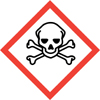Difference between HAZARD and RISK.
Difference between hazard and risk
Hazards can be divided into two basic categories:
- Acute Hazard – these are hazards that pose obvious issues and would impact instantly. An example of this would be a liquid spillage, causing an immediate danger of somebody slipping over and hurting themselves.
- Chronic Hazard – these hazards are not immediately apparent, and can have more of a hidden issue, sometimes only arising after long periods. An example of this would be the build-up of workplace stress or the gradual decline of a piece of machinery.
All hazards, whether acute or chronic fall into six core categories.
- Physical – It refers to the stereotypical workplace hazard most of us would think of, for example, lighting issues, objects obstructing walkways, unsafe machinery, spillages on floors.
- Chemical – This includes any form of liquid, vapour, dust, fumes or gases that could be spilt, leaked or misused.
- Ergonomic – Usually stems from ill-thought-out design or spatial awareness. This can include workstations that aren’t fit for healthy usage. However, this category can also include hazards associated with lack of training (e.g. manual handling) or unsafe working conditions leading to injury (e.g. repetitive movement).
- Radiation – This may be more prevalent in a clinical setting and covers x-rays, gamma rays, UV and microwaves.
- Psychological – This applies heavily across all industries in many forms. Examples of psychological risk include stress, working shifts, problems dealing with the public, internal harassment and lack of empowerment.
- Biological – Not to be confused with chemical, biological risks involve viruses, bacteria and fungi. This can happen through bites, cuts, or contamination through contact with an infected person.
A risk is the chance, high or low, that any hazard will actually cause somebody harm.
Another definition : A risk is the chance that somebody could be harmed by the hazard.
A risk calculates how likely it is that someone will be hurt, and how severely.
The risk is assessed based on the severity of the harm and the likelihood of harm occurring. A risk may be high or low taking into account these two factors.
Likelihood x Severity = Risk
The risk level is a calculation of likelihood and severity. You will often see a risk matrix when looking at how a risk assessment has been carried out... like this:
The severity of harm could range from minor short-term harm to major life-changing injuries or death. The likelihood of harm occurring from the hazard could range from very unlikely to highly likely.So simply you can say Hazard is a source and risk is the severity of the harm and the likelihood of harm occurring.
For example
You are roaming around a forest sudden a lion comes in front of you. Now you think what is the hazard and what is the risk associated to the hazard. Of-course lion is a HAZARD and your life is on risk. But you seen that there is a fencing along with the road and lion can't cross the fencing. Therefore if control measure have been taken to control the risk.
Let's take another hazard for example. A toxic substance in the workplace would be a hazard. It could be classified as a highly hazardous substance. And it certainly fits the definition of a hazard, something with the potential to cause harm.

And what about the risks? Well if a worker accidentally ingested the substance, since it's toxic, it could make them seriously ill. Or worse, kill them.
However, the risk can be controlled, by implementing management procedures. Remember, the risk is based on likelihood and severity. The severity could be reduced, for example by only allowing a very small amount of the substance to be accessed, so that even if an employee was exposed, the quantity would be so small that the effects would be limited. The likelihood of harmful exposure could also be reduced, by the installation of ventilation and exclusion zones, and the enforcing of wearing personal respiration equipment (RPE).
A combination of control measures can significantly reduce the risk level, ensuring that something with the potential to cause harm (the hazard) is not able to actually cause harm or that the harm is minimized (the risk). Often a task may be classified as high risk when it is, in fact, high hazard. Just because a task or activity involves hazards, doesn't mean it is high risk. Hazardous work can be made safe providing that each risk is controlled so that the work can be carried without harm. The hazard is still there, but the risk is controlled.






Comments
Post a Comment